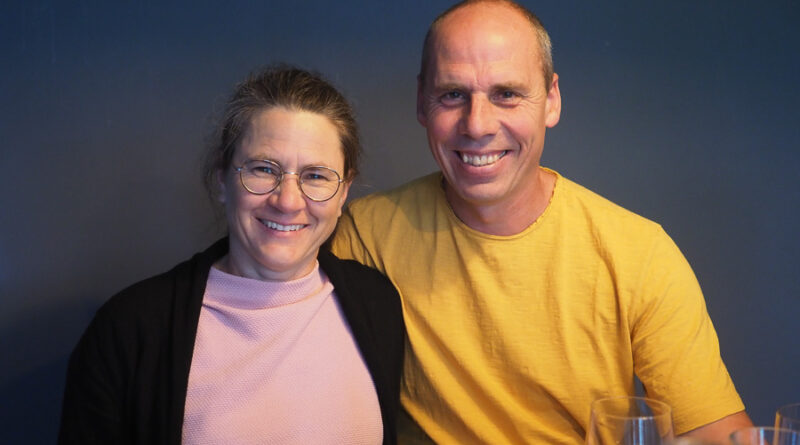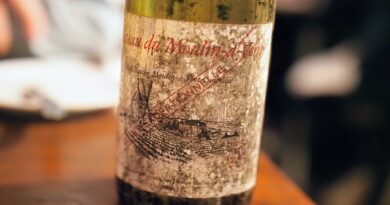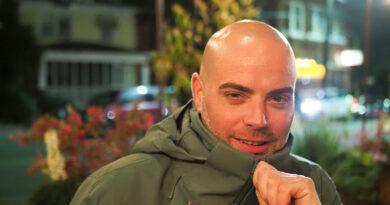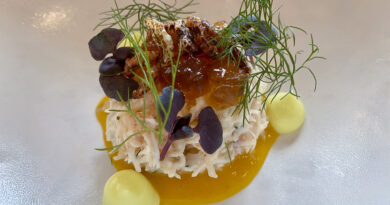The remarkable wines of Werlitsch, Styria, Austria
Website: http://www.werlitsch.com/
Ewald and Brigitte Tscheppe (above) are the couple behind one of Austria’s most interesting wine projects: the Werlitsch winery. They were in London at their importer Newcomer Wines to tell their story to a group of sommeliers and buyers.
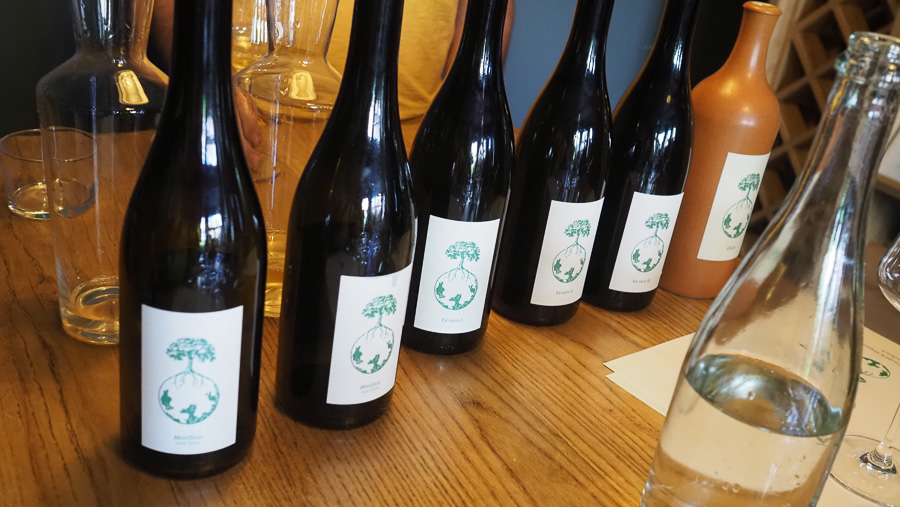
Styria is a region of rolling hills: it’s green and beautiful. ‘In the time of my father it was about drinking wine, and big production,’ says Ewald. ‘After the wine scandal, there was a quality focus. After 1992, a hot vintage when the barriques came, all the top producers did their wines in barriques: international-style wines.’
‘Then the producers realized that it is not just about barriques: then it became about fruit, acidity and technical wines.’ But he says that the natural wine movement has shown a different face of Styria. ‘Styria had become defined by the technical approach and reductive wine styles, but the great names have changed their style and they now have more depth in their wines.’
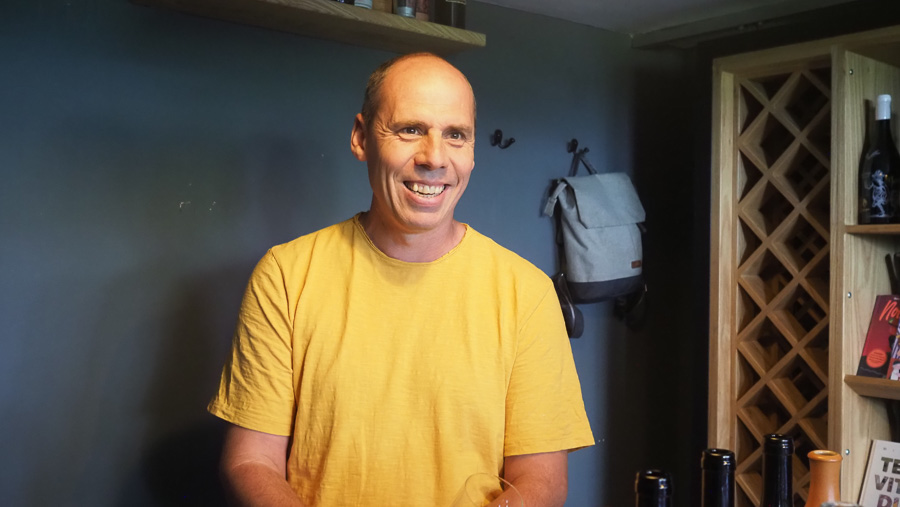
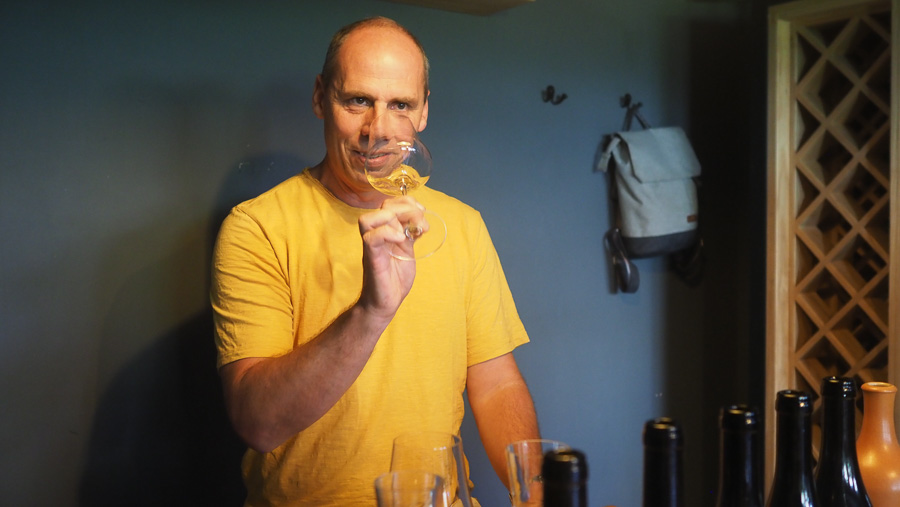
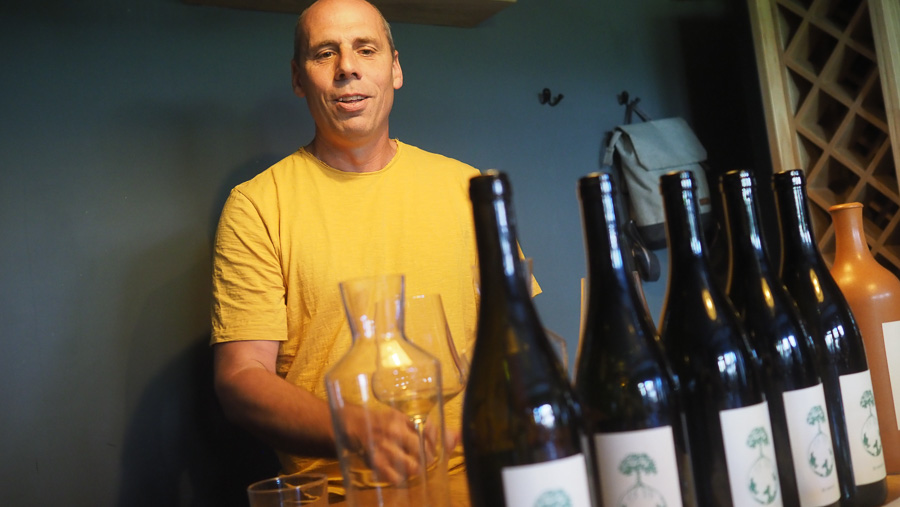
Werlitsch had been making classic wines for many years in a fruit-driven style. ‘When I think of Styria it was always about very fruit-driven Sauvignons, with a reductive style of winemaking,’ says Ewald. ‘At the time I was getting a bit bored with these wines.’
He wanted something natural, not something artificial. ‘This was a journey, up to now. There is so much change going on, even in the vineyards. When you start the process, trying to be more of a companion of nature rather than the ruler of nature trying to control everything, you also invite change into the vineyard. And then you realise there is no vintage where the grape is the same.’
Ewald says that when he started making the wines more naturally, he began a journey that took him from ideas he had in his mind to the practice in the vineyard and cellar. ‘It is the opposite to what you learn in school,’ he says. ‘You start going in this direction, and with experience you also change some aspects. But the idea of winemaking was always the same: the question was, what can be a natural expression in a wine? ‘
What converted him from a techno winemaker to a natural one? ‘The most impact from blind tastings,’ he says. ‘I love to make blind tastings of wines from all over the world. When it proved hard to distinguish a Styrian Sauvignon from a South African one, it blew my mind. Then you start thinking about the process. You have the same fertilizer, you have the same spray, you have the same technique. The knowledge is more or less the same. I felt wine is becoming more like industry, and as a small producer I felt am not able to be competitive.’ He says with 8 hectares he’s not able to afford the machines that techno winemakers use. ‘This can’t be the essence of my property, my soil.’
Another big change was his first experience with skin contact wines from the likes of Josko Gravner and Radikon. ‘I always liked them. Sometimes they were a bit strange where you felt every fault that was in wine was there. But on the other side, when you hear the philosophy it makes so much sense. I started buying these wines and buying them, and this style of winemaking had a big influence on what I’m doing now.’
The big pivot propelling Werlitsch forward was a string of three small vintages in a row: 2014, 2015 and 2016. This meant they could begin selling some of the big stock of back vintages they had built up. In 2016 and 2017 Ewald offered the trade the 2005 and 2006 vintages. ‘This was the big turning point for many people,’ says Ewald, ‘when they drank a 10 year old white and found that it was better than when the wine was fresh.’ I remember tasting a few bottles of the 2006 Ex Vero II and being blown away by it, including a couple in Newcomer and one in Trivet.
With Ex Vero, the wines aren’t varietally led. Ewald used to make wines with his brother Andreas, and they had their own vineyard at home, plus some others. ‘We had plenty of wines. We had four types of Sauvignon, four different Chardonnays, and then we had Muskateller and Welschriesling. And then I liked the Burgundy idea of just making a few wines. I was inspired by Marcel Deiss: his top cuvées are all field blends.’ So he makes three Ex Veros, from the lower, middle and upper parts of the vineyard, rather than dividing things by the variety. ‘When you back in Styria, lots of the old vineyards were field blends. There was a reason for this: when you make five or 10 different varieties in the vineyard and you have different vintages, such as frost or bad flowering seasons, with 10 varieties there are always some you can harvest. This was the main idea behind the field blend.’ Deiss inspired Ewald to take this approach.
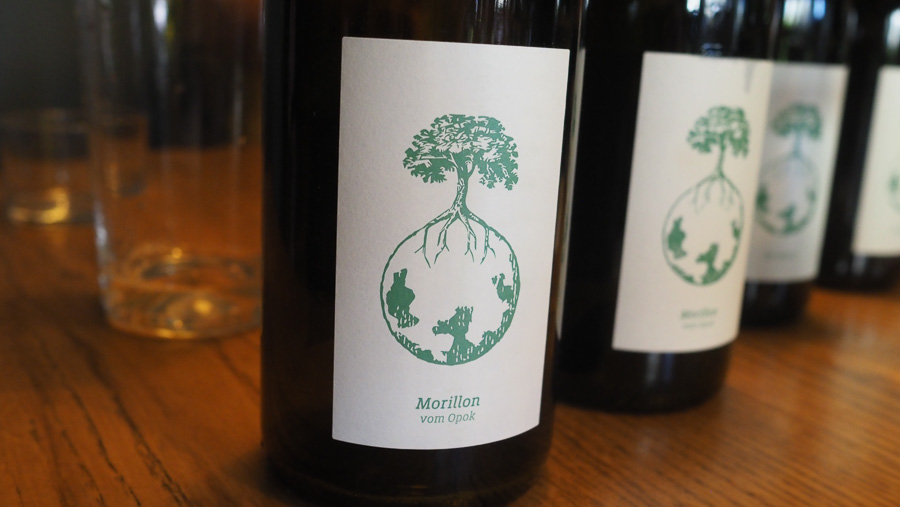
He says that he has ideas about how to work, and as he makes the wines he doesn’t think of the market. The wine grows itself, and when it is in the bottle then you think about sales. ‘This makes me feel extremely free to do what I want to do,’ he says. ‘If you think of the market in advance, you make different decisions in the winemaking.’ He says this was an important lesson for him.
‘I am not a winemaker who experiments a lot,’ he says. ‘So when I have a feeling that this is the best way to do, then I do this for all the wines.’
The Opok wines are the single variety wines, and the main difference between these and the Ex Vero wines is that he keeps them a shorter time in barrel Ex Vero is normally two years, and the Opok wines are 12-18 months in barrel before bottling. ‘I destem, direct press with normally no sedimentation so the whole juice goes into the barrel,’ says Ewald. In the evening when the grapes come in, he destems, and takes the grapes to the press. Normally it then runs into a tank, and the press works into the night. The next day he takes the juice from the tank to the barrel. ‘It might happen that the first juice is clear and at the end it is cloudy,’ he says. ‘For me, in the sediments there lies a lot of character from your vineyards. If you separate them, you have more precise, purer fruit but you lose a bit of the identity of the property.’ He has a sorting table but he doesn’t really use it: sorting is in the vineyard.
‘When the work in the vineyard is nice, even if you pick too early, or a bit to late, the wine always works,’ says Ewald. ‘If the vine is healthy. You don’t have to take care too much about [ripeness]. You try to get it right, but it is much more important if you have a certain picture of a wine in your mind and try to make it like this. Even when I think of the 2014 vintage which was a disaster from the maturity levels, you can trust your vineyard that there is structure, a certain kind of balance, and a certain stability in the wine.’
In the vineyard, the vines are trellised with a one-wire system, with the fruiting wire at 1.8 m. They are cane pruned, and the spacing is between 2 and 6 metres. The floor has permanent cover. This is a region that gets 1100 mm of rain a year. Altogether he has 7.7 hectares of vines, certified biodynamic. First vintage was 2004.
- Ex Vero 1: Chardonnay, Sauvignon Blanc and Welschriesling in the lower part of the vineyard. It’s a 3 hectare selection
- Ex Vero II is Chardonnay, Sauvignon Blanc and a portion of field blend, 3 hectares.
- Ex Vero III is Chardonnay and Sauvignon Blanc. 1.7 hectares at 400 m.
THE WINES
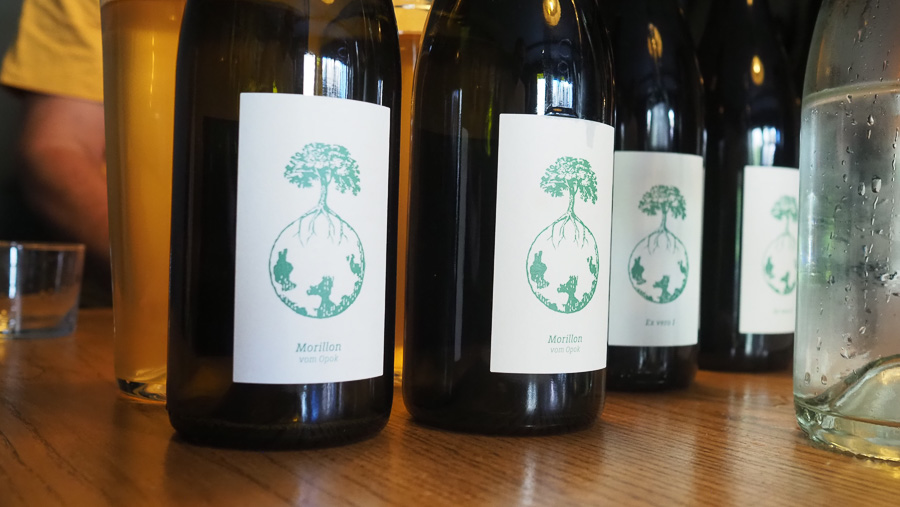
Werlitsch Morillon Vom Opok 2021 Styria, Austria
12.5% alcohol. Wonderful mineral nose of spice, lime and a touch of honey with some sea shell notes. The palate is linear and pure, mineral and crystalline with good acidity and fine spices, as well as apples, lemons and more spicy mineral notes on the finish. 94/100
Werlitsch Morillon Vom Opok 2020 Styria, Austria
This is really distinctive with pure pear and citrus fruit, as well as a hint of creaminess. It has lovely acidity with crystalline lemon notes and nice flow through the palate. Nice precision but also some depth, finishing really crystalline. The new oak (this had some) doesn’t show. 94/100
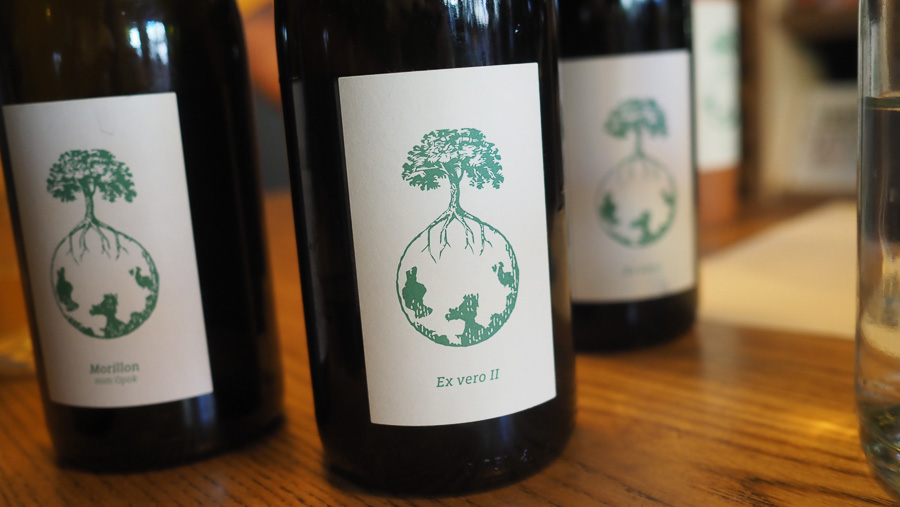
Werlitsch Ex Vero I 2020 Styria, Austria
Predominantly Chardonnay, this comes from the same part of the vineyard as Vom Opok, which refers to the limestone/marl stones. It’s harvested a bit later and spends 2 years in barrel. Astonishing nose with a full dynamic range: bright lime and mineral notes, and also some rich honey, peach and pear. Lovely weight on the palate with honeyed richness, showing apple, lime and some green notes. Long tapering finish. 95/100
Werlitsch Ex Vero II 2020 Styria, Austria
Wonderful nosse of ripe pear and apple with some spicy citrus notes. Textured, vital palate with good acidity, and notes of lemon, pear and apple, and even some honey. Has a fine spicy character as well as some mineral depth. There’s am almost electric tingle on the finish which is long. 95/100
Werlitsch Ex Vero III 2019 Styria, Austria
Super-reductive mineral notes on the nose. Matchstick and struck flint with crystalline citrus fruit. So lively and mineral with amazing precision, showing electric acidity and complex flavours of citrus, spice and pear. Remarkable precision here, and a tapering finish. 96/100
Werlitsch Glück 2020 Styria, Austria
Full golden colour. Perfumed aromatics with honey, melon, apricot and fine spices. The palate is bold and structured with lovely texture to the pear and peach fruit, with a touch of citrus brightness. Multidimensional, and even has some tannin on the finish. 95/100
UK agent: Newcomer Wines

